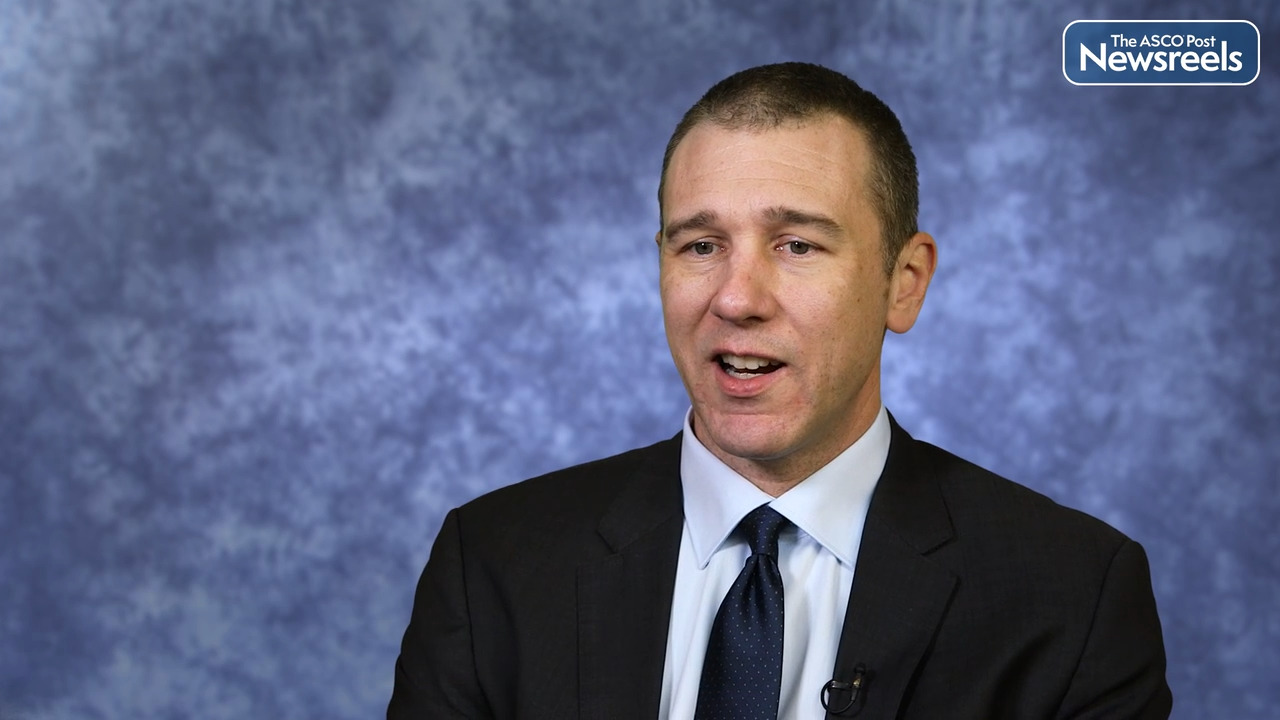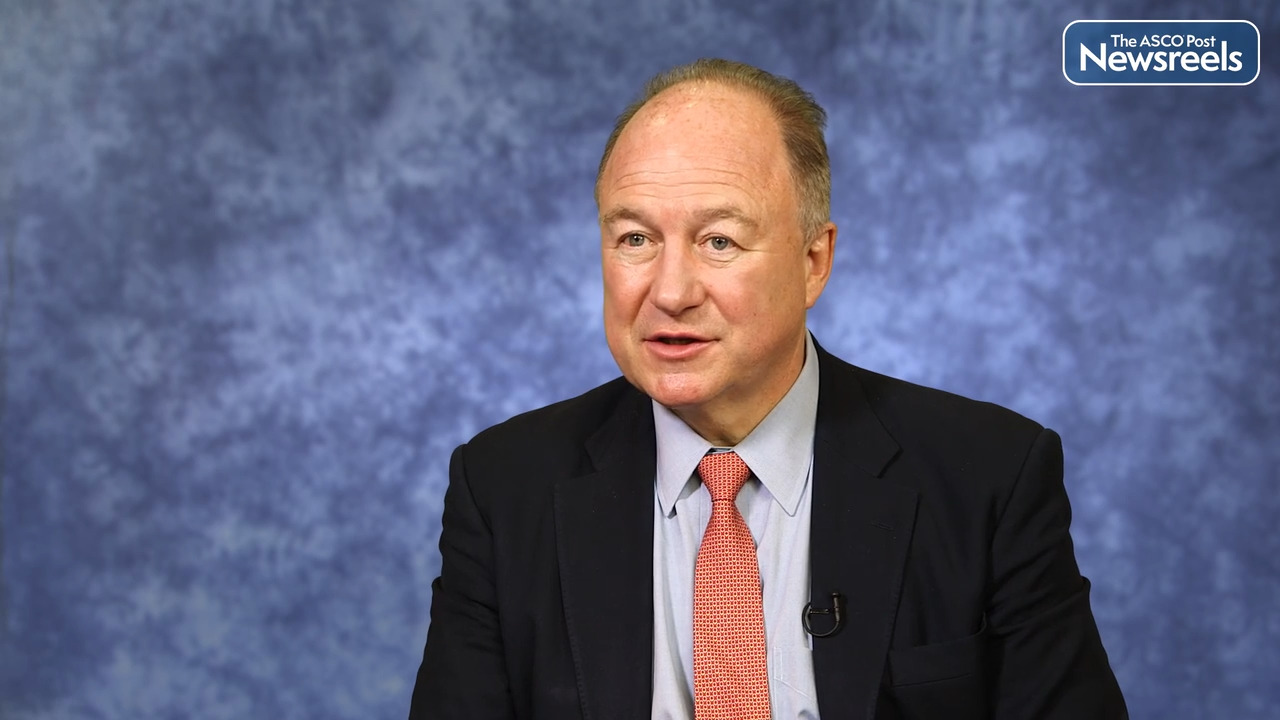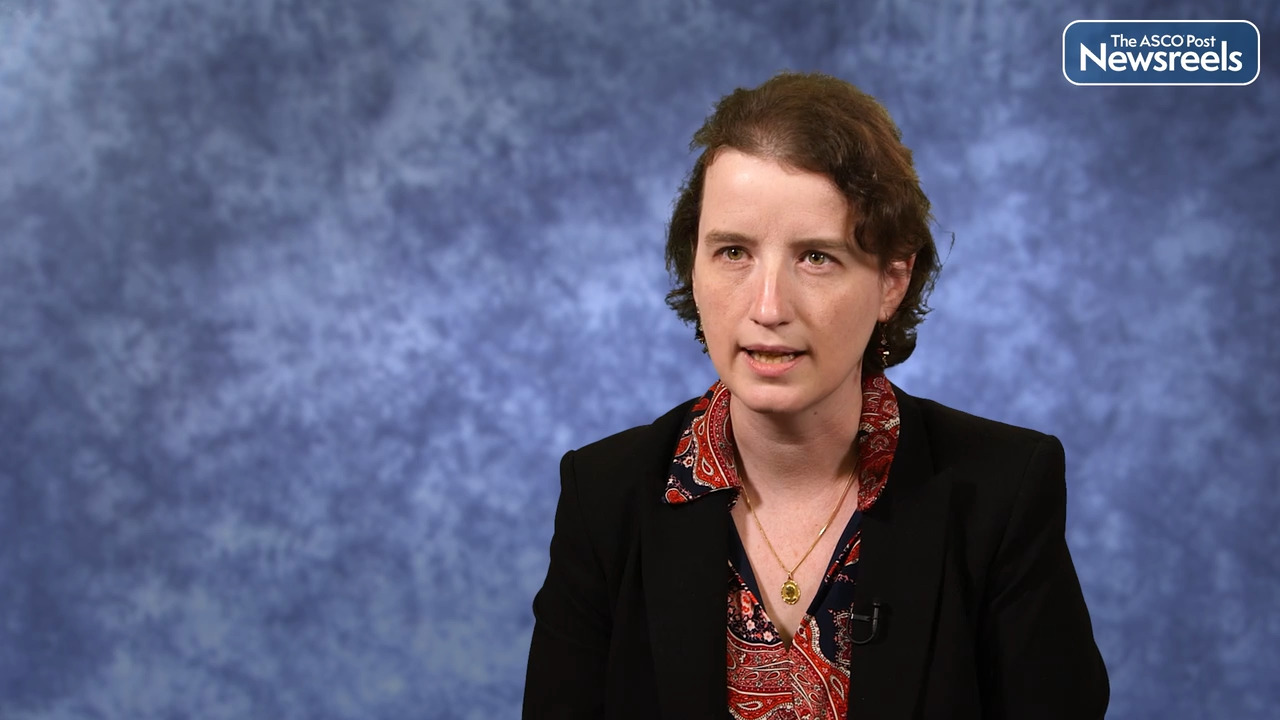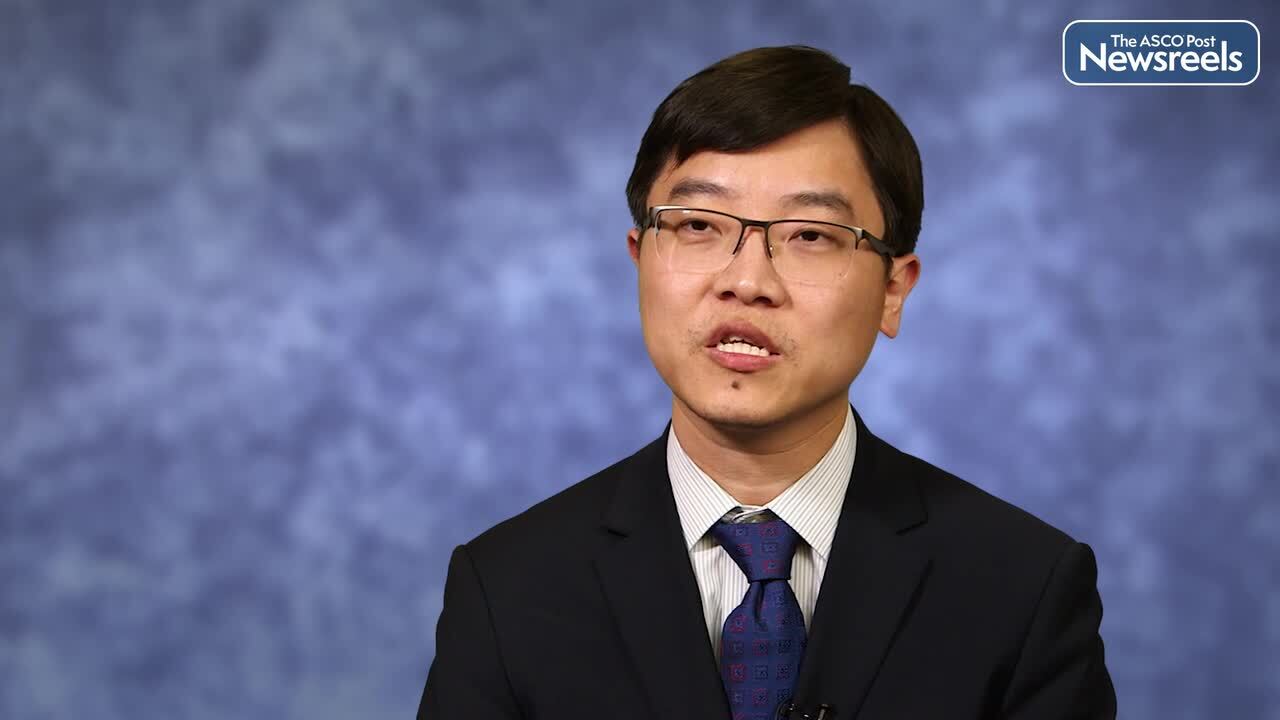Jia Ruan, MD, PhD, on Mantle Cell Lymphoma: Phase II Findings on Acalabrutinib/Lenalidomide/Rituximab
2022 ASH Annual Meeting and Exposition
Jia Ruan, MD, PhD, of Meyer Cancer Center, Weill Cornell Medicine, and NewYork-Presbyterian Hospital, discusses trial results demonstrating that the triple chemotherapy-free combination of acalabrutinib, lenalidomide, and rituximab is well tolerated, highly effective, and produces high rates of minimal residual disease (MRD)-negative complete response as an initial treatment for patients with mantle cell lymphoma, including those with TP53 mutations. Real-time MRD analysis may enable treatment de-escalation during maintenance to minimize toxicity, which warrants further evaluation. An expansion cohort of acalabrutinib/lenalidomide/obinutuzumab is being launched (Abstract 73).
Transcript
Disclaimer: This video transcript has not been proofread or edited and may contain errors.
The purpose of the study is to evaluate the safety and efficacy of this triplet combination. This triplet combination is built upon our previous report of doublet, which is lenalidomide plus rituximab. It has shown very high response rate and durability of the response, so we would like to see if the addition of a next-generation BTK inhibitor would continue to improve efficacy meanwhile, also maintain or improve safety profile. The other purpose of the study is to evaluate the minimal residual disease status, which is a molecular response with the next-generation sequencing-based assay platform clonoSEQ to evaluate the quality of the response in a real-time base because there's a previous study that suggests the quality of the response measured by minimal residual disease correlate with progression-free survival. So, therefore, we want to see how our triplet combination would improve the response quality measured by minimal residual disease.
And the last purpose of the study is to see, based on the MRD result, can we adjust our treatment strategy, particularly in terms of its intensity and duration, especially, in those patient who can achieve MRD-negative complete remission. The finding of our study has shown that this triplet combination is well tolerated with the expected side effects profile. In addition, it also seems to be highly effective measured by both the response rate using Lugano criteria, as well as minimal residual disease measured by clonoSEQ technology. So a hundred percent of our patients achieved response on study, and the Lugano complete remission rate was 83% measured by the clonoSEQ minimal residual disease, which we defined the threshold of less than one in a million.
About 50% of our patient achieve MRD-negative remission after 12 cycles of treatment, and 67% achieved molecular remission in peripheral blood after 12 cycles of treatment, and 83% after 24 cycles of treatment on the triplet. In addition, we have also evaluated the possibility and the feasibility of de-escalation of our treatment after 24 cycles of triplet therapy by discontinuing acalabrutinib and lenalidomide for those patients in molecular remission. We're very pleased with our preliminary findings and we hope that the results of the study could further contribute to providing options for a patient who's seeking chemotherapy, free combinations with highly effective biological combinations. Furthermore, we're hoping to explore the feasibility of limiting the chronic use of biological agents, but use MRD as a evaluation point to guide our treatment strategy.
Related Videos
The ASCO Post Staff
Paolo F. Caimi, MD, of the Taussig Cancer Institute, Cleveland Clinic, discusses new findings showing that patients with diffuse large B-cell lymphoma (DLBCL) who achieve a complete response after salvage therapy with rituximab, ifosfamide, carboplatin, and etoposide (R-ICE) can achieve long-term disease control, regardless of the time to relapse from initial therapy, particularly if they proceed to autologous stem cell transplant (ASCT). These results suggest that second-line chemotherapy followed by ASCT and/or CAR T-cell therapy for chemosensitive and chemorefractory patients may maximize patient outcomes, regardless of time to relapse (Abstract 156).
The ASCO Post Staff
Paul G. Richardson, MD, of the Dana-Farber Cancer Institute, discusses preliminary results from the dose-expansion phase of the CC-92480-MM-001 Trial, which showed promising efficacy in patients with relapsed and refractory multiple myeloma, including those with prior BCMA-targeted therapies. Patients in these two groups had an overall response rate of 40% and 50%, respectively. The results support the development of mezigdomide, currently being evaluated in combination with standard therapies in multiple myeloma as part of a large, ongoing phase I/II trial (NCT03989414) and planned phase III studies (Abstract 568).
The ASCO Post Staff
Eileen M. Boyle, MD, PhD, of the Perlmutter Cancer Center, NYU Langone Health, discusses Fc-mediated antibody effector function, inflammation resolution, and oligoclonality and their role in predicting sustained measurable residual disease negativity in patients with newly diagnosed multiple myeloma who were treated with immunotherapy regimens. For the first time, an analysis of T-cell receptors shows that oligoclonal profiles seen on treatment may influence the fitness of the immune response (Abstract 100).
The ASCO Post Staff
Jennifer R. Brown, MD, PhD, of Dana-Farber Cancer Institute, discusses phase III findings of the ALPINE study, which showed that zanubrutinib is more efficacious and better tolerated than ibrutinib as a treatment for patients with relapsed or refractory chronic lymphocytic leukemia (CLL) and small lymphocytic lymphoma (SLL). In this first head-to-head comparison of the two BTK inhibitors, the superior progression-free survival of zanubrutinib was observed across all major subgroups, including high-risk patients (Abstract LBA-6).
The ASCO Post Staff
Jiye Liu, PhD, of Dana-Farber Cancer Institute, discusses study findings that demonstrate KDM6A regulates CD38 and CD48 expression in multiple myeloma. Dr. Liu’s team validated combination treatment with an FDA-approved EZH2 inhibitor plus daratumumab, which can overcome daratumumab resistance in preclinical multiple myeloma models, providing the rationale for combination clinical trials to improve patient outcome (Abstract 148).





